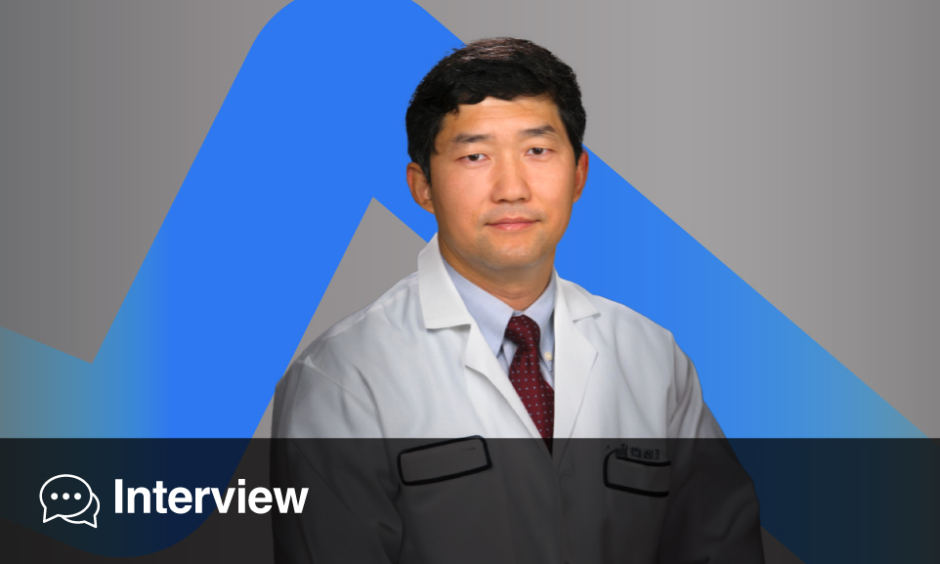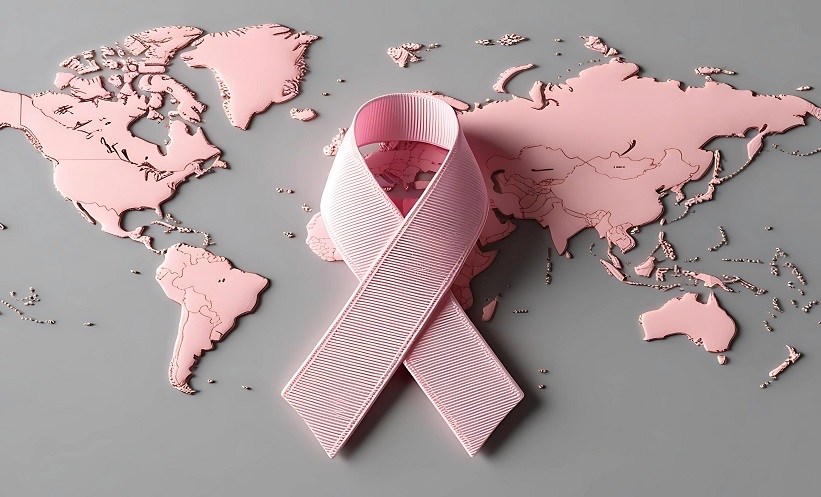Jianjun Zhang | Professor, Department of Thoracic/Head and Neck Medical Oncology, Division of Cancer Medicine, The University of Texas MD Anderson Cancer Center, Houston, Texas, USA
Citation: EMJ Oncol. 2024;12[1]:88-90. https://doi.org/10.33590/emjoncol/EOZK8819.
![]()
Your journey into medicine is quite remarkable, having pursued both an MD and a PhD in China. What originally inspired you to take this path, and how did your early experiences shape your passion for oncology?
I think oncology has been at the bottom of my heart since I was in high school. When I was a young kid, my dream career was to become an astronaut. I was very good with physics and mathematics. But my interest turned towards biology and medicine when I was in high school when my father was diagnosed with cancer. I got to spend a year with him, and he unfortunately passed away. So that is the time, as a defensive mechanism, I started reading a lot of medical books, even before I went to medical school. Since then, I became more and more interested in the science associated with oncology. That’s one of the reasons why I went on to pursue my PhD in oncology after medical school. I have always been interested in science, because of which I’m currently doing three jobs: the first as an oncologist where I treat patients, the second as a scientist where I am trying to understand biology and find new treatment options, and the third as a teacher for the young generation; I enjoy that.
After moving to the USA, you completed a research fellowship at Memorial Sloan Kettering, focusing on cancer genomics. How did that experience influence your decision to specialise in this field, particularly in relation to lung cancer?
As mentioned earlier, I knew what I wanted to do from a very young age. So, my initial plan was to do research for 3–4 years and then go back to the medical field, resume my medical training, and then work as a physician scientist as I do right now; the plan was a little bit different than the reality. My project was not going on well for quite some time. So, I had to stay for longer in the research field, making me always the oldest in my class, in my residency training, and also in my fellowship training.
I chose lung cancer because lung cancer is the number one cancer killer in the world. When we consider making a major impact in a small field versus making a smaller impact on a bigger field, though my ideas may seem conservative to many, I think I would rather be the latter. I do think the major impact in small fields is still important, but I think the chances are lower if you want to make a bigger impact. Lung cancer is a very big problem, so even if you make a small improvement, you can actually make a very big impact in the community. That’s one of the reasons why I went for lung cancer. Additionally, the active research opportunities within lung cancer research make it a particularly engaging field for someone passionate about science.
Since joining MD Anderson, you’ve worn many hats: clinician, researcher, and educator. How do you balance these roles, and what drives you to bridge the gap between research and patient care?
This is a very tough question. There are times when I wish a day had 27 hours or sometimes 30 hours. For me, patient care is my priority. On paper, I should spend 20–25% of my time on patient care, but most of the time I spend more time on it. Patients can call you or email you anytime with questions, questions that you would have to answer. So, I think that is our number one goal. Our second goal would be research and education. I think education is key. There is only so much one can do individually, but when you train more people and work towards the same goal, the impact on the community becomes exponential.
I spend a lot of time with my trainees and fellows when it comes to research. When I was a junior faculty member, my research just stopped whenever I had to go into meetings, but now that I have a lot of trainees, I feel the research never stops; people are there to carry on your work. I think things are getting a little bit easier that way; of course, the more responsibilities you have, the busier you get.
Your lab’s work in cancer genomics and immunogenomics is groundbreaking. Could you share some of the most exciting findings from your research, especially in terms of how they’re impacting lung cancer treatment?
There are two major directions in my lab. One is looking into the intra-tumour heterogeneity as a mechanism of therapeutic resistance. We published our first paper in Science in 2014 with Charlie Swanton from The Francis Crick Institute, London, UK, and we are continuing this work. Now, we’re not only looking at intra-tumour heterogeneity in resected tumours but also in primary and metastatic tumours with and without treatment. We’ve identified specific mutations or genomic changes linked to the development of metastatic disease, which could help inform adjuvant treatments to prevent micrometastatic disease.
The second direction is the pre-cancer space. Over the past two decades, lung cancer treatment has improved significantly. The 5-year survival rate has increased from around 5–10% to 30–40%, which is a major advancement. However, 60% of patients still die within 5 years, so there’s much more to be done. Since staging is the most important prognostic factor, there’s a strong focus on early detection and lung cancer screening. That’s partly why I’ve shifted some focus in that direction. But as an oncologist, not a pulmonologist or radiologist, lung cancer screening isn’t my primary expertise.
I’m particularly interested in the approach taken when precancer is detected. Typically, patients are referred for surgery or radiation to address the localised issue. However, many patients present with multiple lung nodules, some of which are not cancerous and may not be suitable for biopsy. Our goal is to understand how we can utilise pre-cancerous or pre-invasive lesions, which are theoretically simpler on a molecular level. Laboratory studies have shown that these lesions often maintain a better-preserved immune response. We are exploring how to leverage these two factors: the simpler molecular makeup and the stronger immune response.
How can we effectively kill precancerous cells to prevent the progression to invasive cancer, which is much more challenging to treat? This question led us to explore the molecular evolution of precancers into invasive cancers in our lab. We are investigating the immune characteristics associated with this evolution and how we can use that information to prevent lung cancer. We have developed animal models in collaboration with John Heymach, MD Anderson Cancer Center, and are utilising human specimens through international collaborations, which has allowed us to initiate two clinical trials based on our research. I’m proud that we have successfully translated our findings from the laboratory to clinical practice.
Drawing now on the European Society for Medical Oncology (ESMO) Congress 2024, what sessions are you most excited to attend?
I think the oncology field overall has been moving so fast, in a way, you know, we’re spoiled. We always expect big things to happen. Many years ago, when I started practice in the USA, we used the National Comprehensive Cancer Network (NCCN) guideline as one of the major guidelines. Usually, you don’t get a major change, maybe one major change every 1 or 2 years. But a couple of years ago, we started seeing 10–12 major changes within a year. I have now noticed that this has slowed down a bit. It’s very reasonable after the initial success of immunotherapy that has raised the bar high. We probably need another basic scientific breakthrough to more clinical breakthroughs.
So, this year at the American Society of Clinical Oncology (ASCO) Annual Meeting just couple months ago, we had a good time for lung cancer with the presentation of several practice-changing trials. Another highlight was a new drug presented at the World Conference on Lung Cancer (WCLC) 2024 and ASCO, a bispecific antibody called ivonescimab, which targets programmed death ligand 1 and vascular endothelial growth factor. This drug was compared to pembrolizumab (the most commonly used immunotherapy drug for lung cancer), and the results obtained were statistically significant, and clinical meaningful. This ESMO, there are several interesting studies with trial updates and some translational aspects related to lung cancer, but none were changing practice. For me, I was thrilled to chair a session that finally included lung cancer prevention and interception/stop progression of precancers to prevent invasive cancer in a major conference. I’ve been advocating for this for many years, and it’s exciting to see it happen.
For the next generation of oncologists, what advice would you like to instil in them, to ensure they are as successful as yourself?
Success can be defined in different ways, but for me, it means enjoying what I do and feeling fulfilled, even if it keeps me busy. I believe the work I do has a positive impact on people’s lives, and that’s how I define success. So, I think for the younger generation, the first thing would be to find something you really love; otherwise, you will suffer. Even if you are successful, standing on the podium, teaching, with all the glories, you’re still going to suffer if you don’t like what you do. I think that’s the first important thing one should do. The second thing is to love science; oncology or medicine in general is driven by science. If you want to be an academic physician, a passion for science is essential. While treating patients is important, pursuing academia requires a deep love for scientific research. The last thing would be to have an inclination towards AI. Having knowledge of mathematics and computer science is a significant advantage in many fields. Even if you don’t directly work with these technologies, understanding the process can make your work much more effective.







